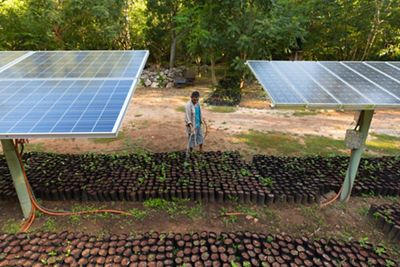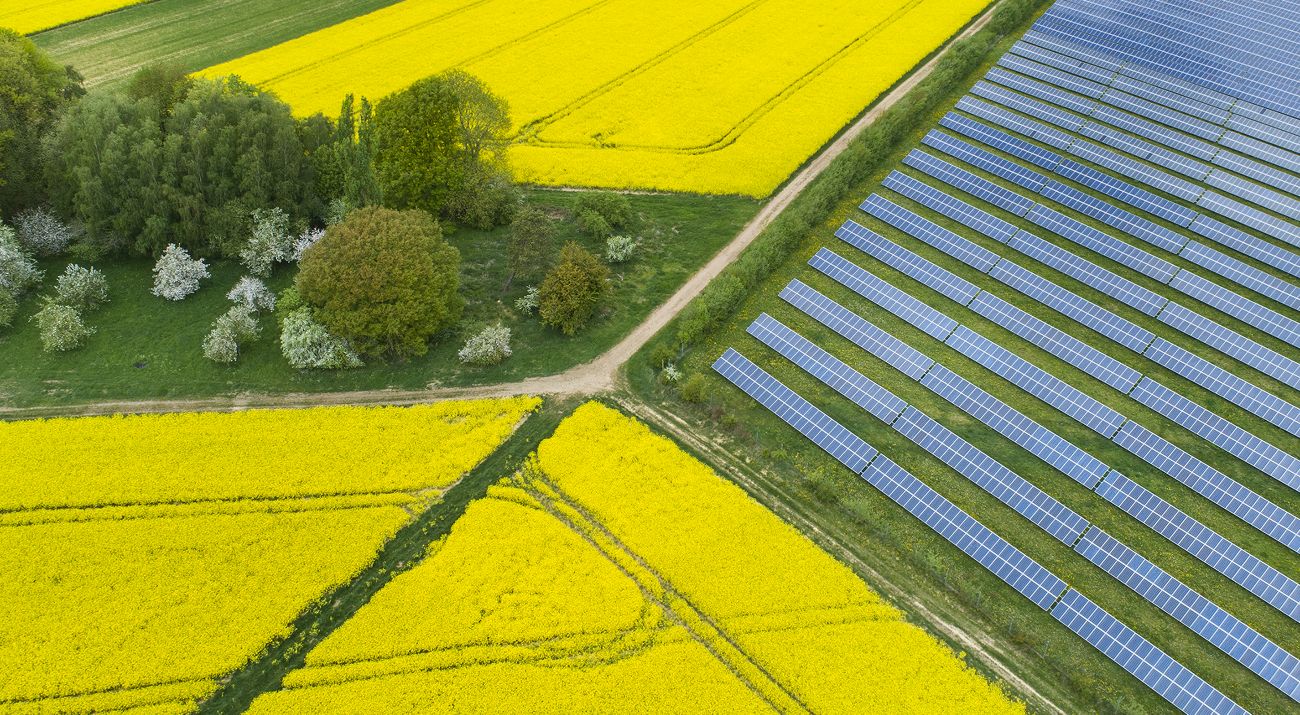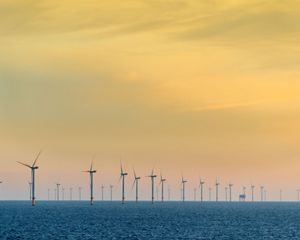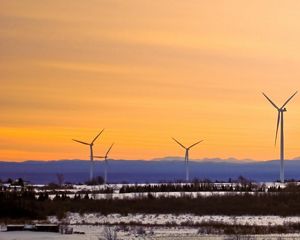Our Clean Energy Future Is Not Just About "How"—It’s Also "Where"
Siting renewables on Earth’s converted lands can meet Paris Agreement clean energy targets 17 times over
A version of this article first appeared on November 26, 2019. It has been updated to include new guidance from the IUCN—a link to the full report is available below.
Key Takeaways
- More clean energy will be essential for meeting global climate goals, but a haphazard approach to siting new installations could end up converting habitats important for carbon storage and biodiversity.
- TNC research shows we can meet clean energy goals 17 times over by deploying new energy infrastructure on previously converted areas such as agricultural lands, mine sites and other transformed terrain.
- Broad agreement on siting the likes of solar and wind could accelerate the transition to clean energy and help to close the US$28 trillion financing gap these infrastructure projects face.
The transition to clean energy is already underway, yet we know that reaching emission reduction targets demands the pace accelerate even more.
The majority of greenhouse gas emissions are caused by fossil fuel use, and the most important climate change action we can take is reducing fossil fuel usage and accelerating the shift to clean energy. Indeed, the 2015 Paris Climate Agreement goal to limit global warming to 1.5 degrees above pre-industrial levels, and the recent IPCC report on what happens if we don’t, makes the urgency of this transition undeniably clear.
Haphazard energy siting endangers natural lands
Yet we diminish our progress if we fail to spare natural lands in the planet’s transition to clean energy. While the world gets smarter on energy, we must also accept the present challenge: Clean energy sources such as solar and wind, for all their benefits, need more space in a finite world. The harsh reality is that these cleaner energy sources have a much a larger land footprint than coal, the egregious carbon offender responsible for more than 40 percent of global fossil fuel-based CO2 emissions, according to the Global Carbon Project. If we’re not careful about where we site clean energy installations, we could end up converting habitats important for carbon storage and biodiversity conservation, ultimately creating conflicts and slowing development.
Quote
If we’re not careful about where we site clean energy installations, we could end up converting habitats important for carbon storage and biodiversity conservation, ultimately creating conflicts and slowing development.
Converted lands can meet clean energy demand
But there is a clear path forward. For the future of biodiversity and the fate of global emissions goals, the world needs to steer the build-out of clean energy to already converted lands. Our research shows it’s entirely possible: Earth’s converted lands can provide the footprint necessary to meet clean energy demand at a level 17 times the nationally determined contributions (NDC) committed to by countries as part of the Paris Climate Agreement.
Globally, there are more than 6 million square kilometers of converted lands composed of settled areas, agriculture lands, mine sites, roads, and other transformed lands, that are also suitable for renewable energy development. A deliberate strategy to site energy on these lands relieves pressure on our remaining natural lands.
Better siting supports climate and biodiversity goals
In contrast, a business-as-usual, unplanned piecemeal approach to deploying clean energy sets us back in ways we can’t afford. First, it would threaten to wipe out a sum total of natural areas that add up to the size of Iceland. Secondly, clearing plants and trees would further destroy one of our best natural climate solutions—nature’s own ability to store carbon—undermining much of the gains we’d see from clean energy.
The consequences would hit global biodiversity hard, too. In countries such as Indonesia, Malaysia, and Thailand more than 150 threatened and endangered species could face harm if natural lands shouldered the expanded clean energy footprint. Similarly, wildlife habitat in the U.S. would shrink by an area the size of Connecticut. Losses like this could prove consequential for species on the brink, such as sage grouse in North American grasslands or the snow leopard of Central Asia.

Agreement on siting minimizes investment risk
In fact, we need a solid, agreed-upon prescription for where renewables’ build-out should occur if we’re to facilitate the rapid transition to clean energy. Here’s why: Clean energy infrastructure projects face a financing gap of upwards of US$28 trillion. Only the scale of capital held by large institutional investors such as pension, insurance, and sovereign wealth funds can close that gap.
Yet clean energy infrastructure projects have long occupied a higher risk investment category. Policies that create renewable energy zones on already converted lands can minimize investment risk and spur the major private investment required to fill the investment gap and, ultimately, push the planet closer to reaching emissions goals.
The IUCN’s recent guidelines provide another tool to help developers mitigate the impacts of solar and wind energy development on biodiversity. Based on the mitigation hierarchy—avoid, minimize, restore, offset—this report is about proactively guiding the right energy mix toward the right places, not just roping off the wrong ones. Ultimately, though, we need to shift toward a paradigm where our focus is entirely on improving siting to avoid impacts, not offsetting—because we know there is enough land to do so.
The Paris Climate Agreement gave us a target and an urgent call for action compelling us forward. It’s our opportunity to build a clean energy future in the right places. The world is waiting for nothing less.
Global Insights
Check out our latest thinking and real-world solutions to some of the most complex challenges facing people and the planet today.



